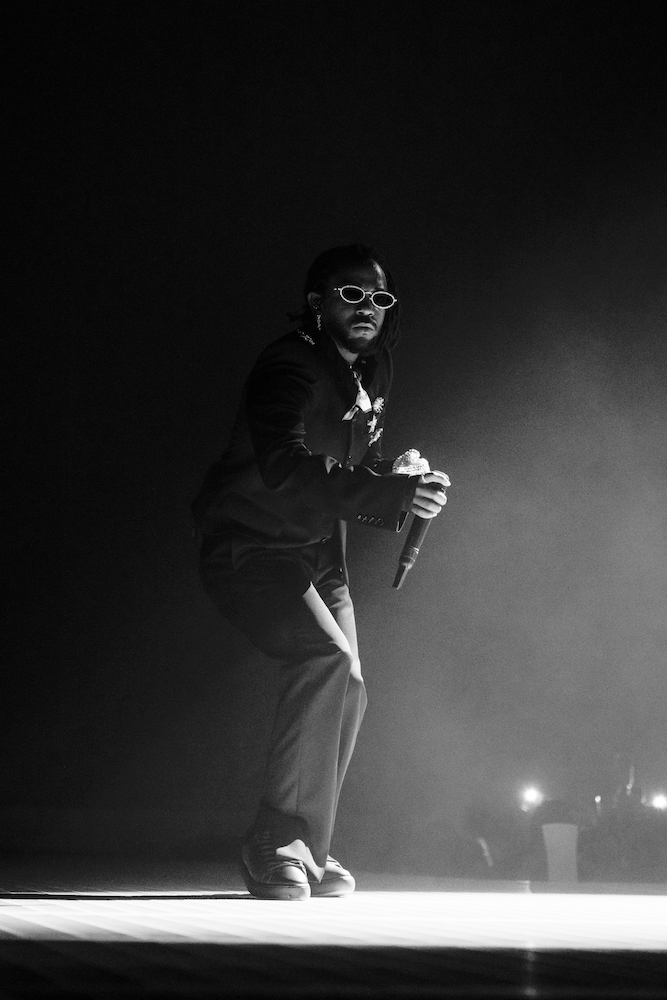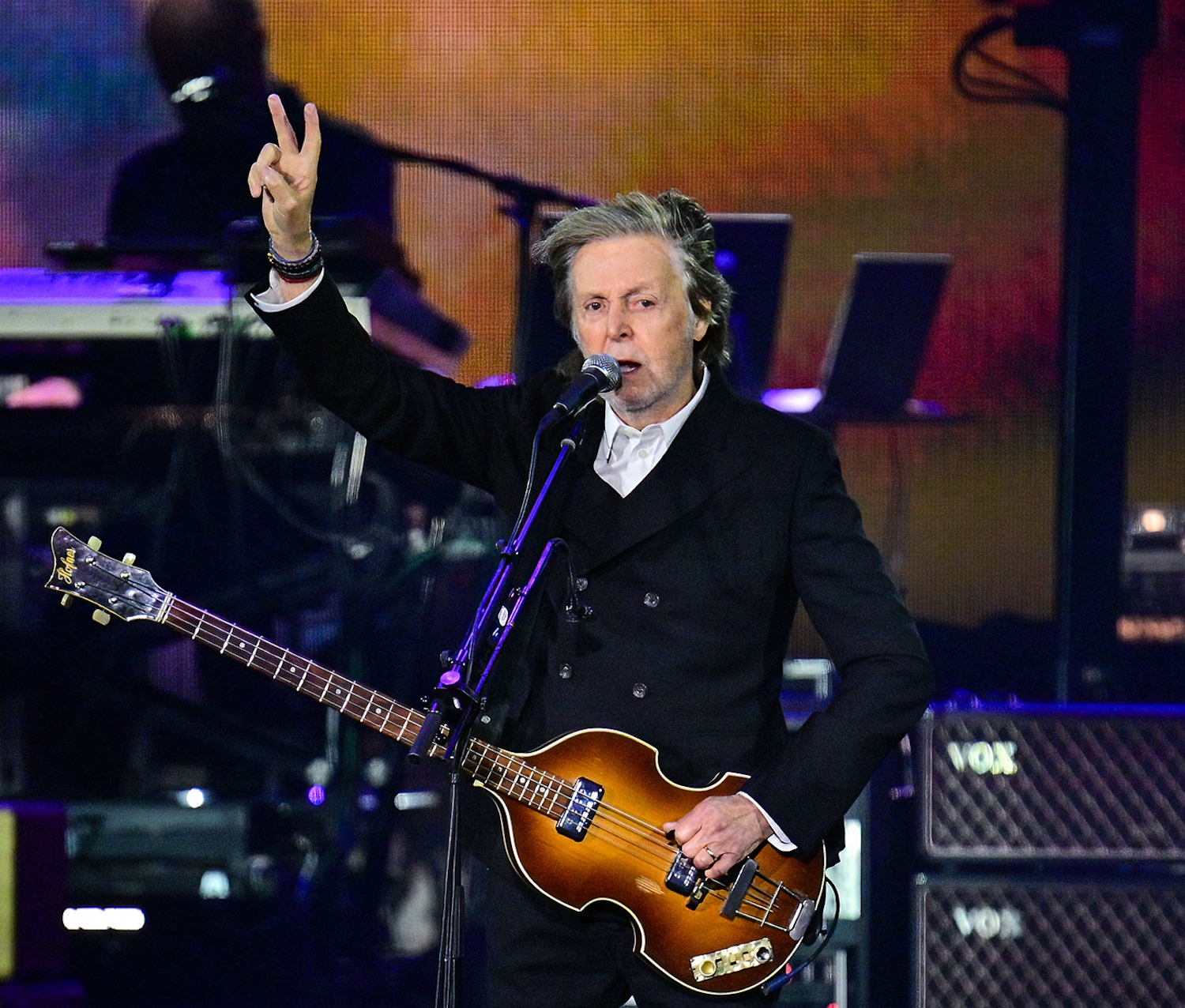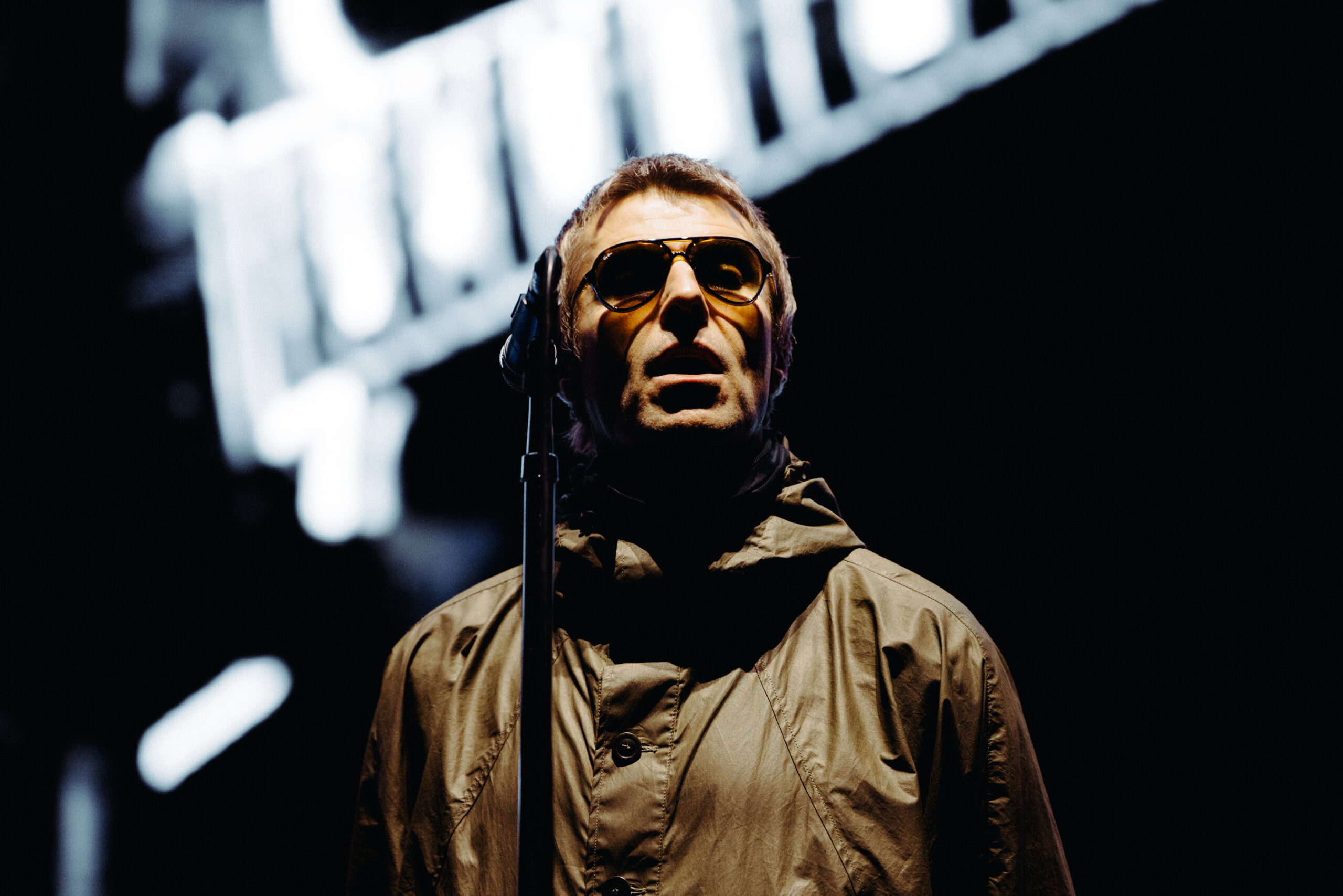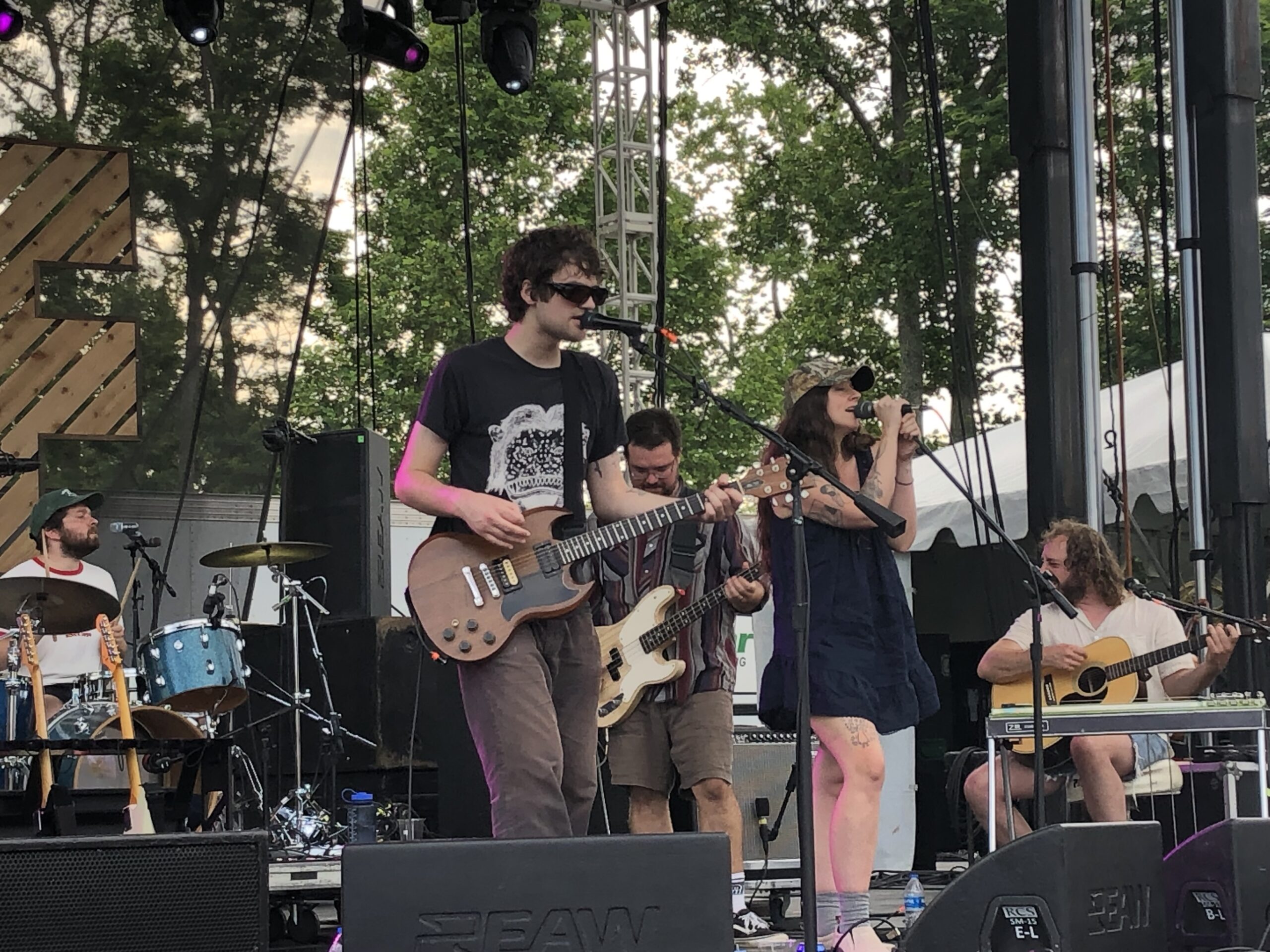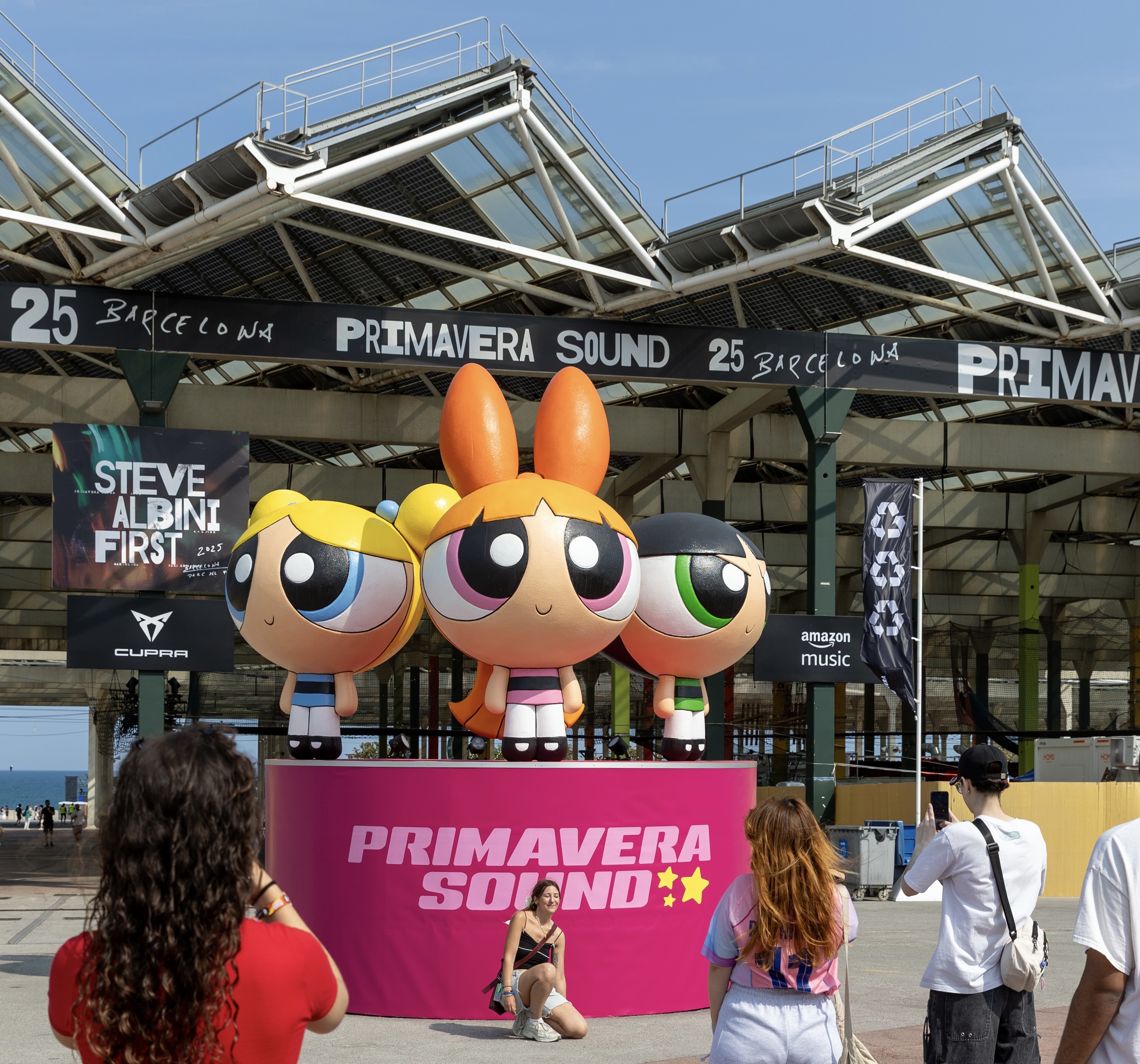The long-awaited return of Kendrick Lamar is here. In May, he came back with the messy, complicated, and striking double album Mr. Morale & The Big Steppers. Now, he’s taking the Big Steppers tour across the world. The show, in many ways, was as messy, complicated, and striking as the album it promotes.
The Big Steppers Tour, which hit Barclays Center in Brooklyn last night, was a family affair. Lamar has brought two openers on the road with him — both pgLang signees, Tanna Leone and Baby Keem. Leone opens the show with a brisk 15-minute set featuring tracks from his recent debut Sleepy Soldier. He did an admirable job warming up the early attendees, the highlight being "Here We Go Again" and its pillowy synths abruptly shifting into a hardened trap beat. His and Keem's sets were both simpler, an MC solo on the mainstage against a screen. Keem's set showed his quickly ascending profile, with members of the crowd already rapping along to nearly every song. By the time he got to "Orange Soda" later in the set, you could almost be fooled into thinking he was the headliner.
The key word is, of course, almost. Between the mythos and fervor long surrounding Kendrick and his natural stage presence, he’s always been one of those artists that makes you feel like you are witnessing something somewhat beyond us when you see him live. He comes out, and it feels like electrical currents are in the air; you immediately grasp you are in the presence of one of the true greats. On the Big Steppers tour, Lamar alternates between wielding that power and confounding it. He almost presents himself as a cipher now — hair pulled back, suited, behind sunglasses for half the show, Michael Jackson glove, only rarely addressing the audience between songs and barely cracking a smile until the show's very conclusion. It’s a fitting, quiet intensity, an artist’s comeback as a person both a bit healed and more conflicted than ever, presenting music that at times is nearly alien to hear in the context of a big rap show in an arena.
From its earliest moments, Lamar’s Big Steppers set announces this is an artier, more reflective performance. Dancers lined up on the walkway in the middle of the pit, eventually scattering around the stage as Lamar was revealed, seated at a piano with his back to the audience tumbling through the initial lines of "United In Grief." The entire opener played out like a theatrical piece, a pause in the song and another set change of sorts leading Lamar out to the walkway, furiously rapping the rest of the song while holding a ventriloquist dummy.
The show had lots of choreography and thematic framework, but also a sort of spartan air to it. More often than not, Lamar rapped isolated on the walkway, starkly lit or reflected as a shadow on a curtain draped over the stage. The dancers returned throughout, and towards the end he was encased in a cube that then raised up to survey the crowd from above. There were "therapist" interjections via Helen Mirren’s voiceover, often setting up the next act — the most powerful moment arriving when she said "You’ve once again let your ego get the best of you, must I remind you how this went before?" as "Humble" roared to life.
Much of this aligned with Mr. Morale’s self-interrogation, letting the new songs and their emotional intensity reverberate around the arena without production obfuscation or distraction. If you take out the interludes and don’t count "We Cry Together," he performed every new song save "Auntie Diaries" and "Mother I Sober." In the same way that the album gives us a glimpse into all the years of Lamar going through something, the accompanying show often felt like a cathartic outpouring as performance art.
Of course, each Lamar project has had its own distinct arcs and aesthetic. You might expect it would be jarring to hear the new, at times more difficult, material alongside all the beloved old bangers, and you’d be partially right. For much of the show, Lamar alternated directly between a new track or two and then a favorite from the past. Sometimes, the juxtapositions were fascinating, and informed the meaning and performance of both songs — like when "Worldwide Steppers" abruptly yielded to "Backseat Freestyle," the therapy album’s account of past sexual exploits hard-cutting to the song where everyone raps along to the hook about fucking the world for 72 hours. Other times, it feels like a rather conscious move to keep the audience on a certain level, giving them a "DNA" or a "m.A.A.d. City" to lose their shit to between more distantly contemplative tracks. While a larger block of new material in a row might be more challenging, you could also see how it might be more thematically concrete.
While it’s interesting to see which new songs are already garnering major reactions — "N95," "Die Hard," and "Count Me Out" went over particularly well — obviously people are going to be attached to old hits. Along the way, Lamar was switching between songs from a new album grappling with the weight of his identity, and frequent reminders of his world-conquering status — "Element," "Backseat Freestyle," "Humble," "Bitch, Don’t Kill My Vibe," "Money Trees," and "Alright" all garnered massive singalongs. It was here that Lamar did something that was daring (and/or baffling) with the pacing of the show. As he arrived at the final stretch, he’d spread his biggest songs out evenly through the set. There was no victory lap, aside from Keem returning to the stage for a fiery "Family Ties." Otherwise, Lamar concluded with a powerful stretch of new material. It felt like a bold moment, to have him back at the piano performing Mr. Morale highlight "Crown," and it became one of the most quietly powerful songs of the night. From there he delivered "Mr. Morale" and "Savior," which makes some kind of sense as a conclusion but closed the night on an oddly quiet note — especially with how impressive and visceral "Mr. Morale" has already become live.
On some level, some of this is nitpicking. Lamar’s music, at this point, invites over-analyzing. Again, the show is messy and complicated like the album it promotes. Not every through line is consistent, not every vibe is maintained when you think they should be. Instead, the Big Steppers tour becomes a wild ride through Lamar’s psyche as well as some of the best music made by anyone in the last 10 years. It bobs and weaves and dips and soars along the way, and while it might not always make complete sense or may produce some kind of whiplash, it’s thought-provoking and moving throughout. Lamar’s always been capable of that, whether in crowd-pleasing festival sets or visually poetic TV performances. The Big Steppers show doesn’t allow you a simple, fun night at a show; it asks something of you the same way the album does. But at the same time, it underlines, again and again, the generational icon Lamar is, even as he turns that over in all different lights.
